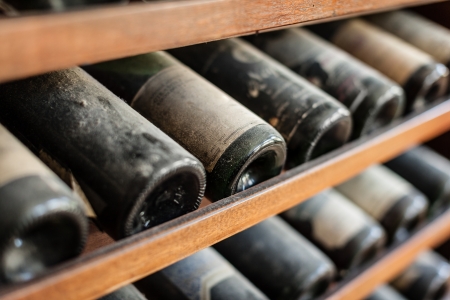
The hand blown bottle was labeled with the year 1787 and the word “Lafitte,” a top French vineyard, etched into the glass. The wine was taken from a bricked-up cellar in Paris hundreds of years ago. It eventually became one of most expensive bottles of wine ever sold.
Also etched into the bottle were the initials “TH.J.” Many wine experts concluded the bottle belonged to Thomas Jefferson. Jefferson was America’s Minister to France between 1785 and the French Revolution. After his return from France, Jefferson had several bottles of French wine delivered to the states for himself and George Washington.
The bottle of Lafitte sold for £105,000, $157,000 US dollars, in 1985 to Christopher Forbes, son of Malcolm Forbes. In today’s dollars it would be $350,000. After the auction, other serious collections sought out Jefferson bottles. There’s speculation as to whether all the bottles labeled as such are legitimate Jefferson bottles. Yet, they still go for astronomical sums because people are captivated by the story.
When Patrick Radden Keefe wrote about the Lafitte Jefferson bottle in the New Yorker in 2007, the article was widely shared. While, most readers aren’t going to shell out the price of a starter home for a bottle of wine, the buzz was about the story. Notice, it wasn’t the bouquet of the wine that got people talking, it was the mystique of the people involved.
It’s the same thing with art. When there’s a story, it becomes more valuable. Take Van Gogh’s famous “Portrait of Dr. Gachet” for example. A nice painting no doubt, but art lovers fawn over the story behind it. Van Gogh painted the portrait of the doctor he stayed with after he was released from the asylum. The two had a complex relationship through anxiety and mental illness, eventually culminating in the famous painting. The same goes for Marilyn Monroe’s dress or Benjamin Franklin’s glasses. The story matters almost more than the piece itself.
The lesson applies to more than just artifacts collected by the rich and famous. The same thing applies to your career, or your business. A story will differentiate you.
I remember one of the most effective elementary school principals I’ve ever met telling me when she was a kindergartener, she was sitting in class one day looked at bored kids around the room, thinking, “School could be much better than this.” Picturing her as a five-year-old imagining all the ways her teacher could be more engaging, makes me smile every time I think about it. That little girl went on to become a kindergarten teacher herself, ultimately getting a PhD, and becoming a principal, then later a mentor to new principals. Whenever I think about her, I think about her story. It makes me value her even more.
You may think of yourself or your organization as a plain old bottle of grocery store wine. But chances are, you’ve been places and done things that make you interesting.
Ask yourself, how did your organization start? Why did you choose your profession? Why does this matter to you? If you want to differentiate, find your story and start telling it.
When people know your story, they’ll value you and your business a whole lot more.